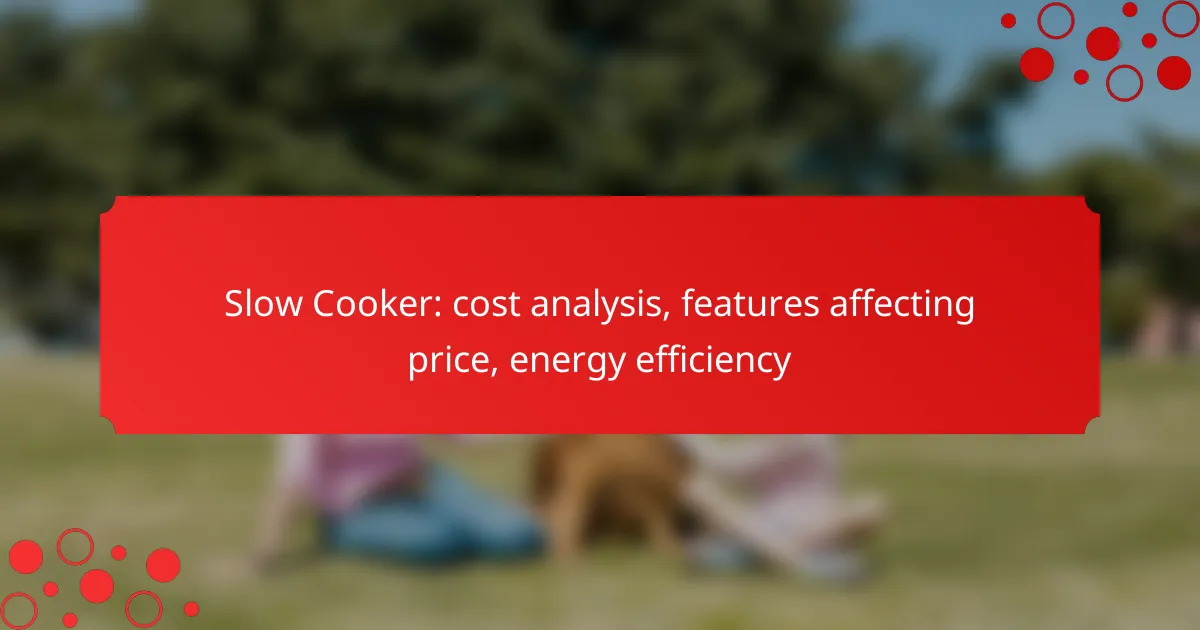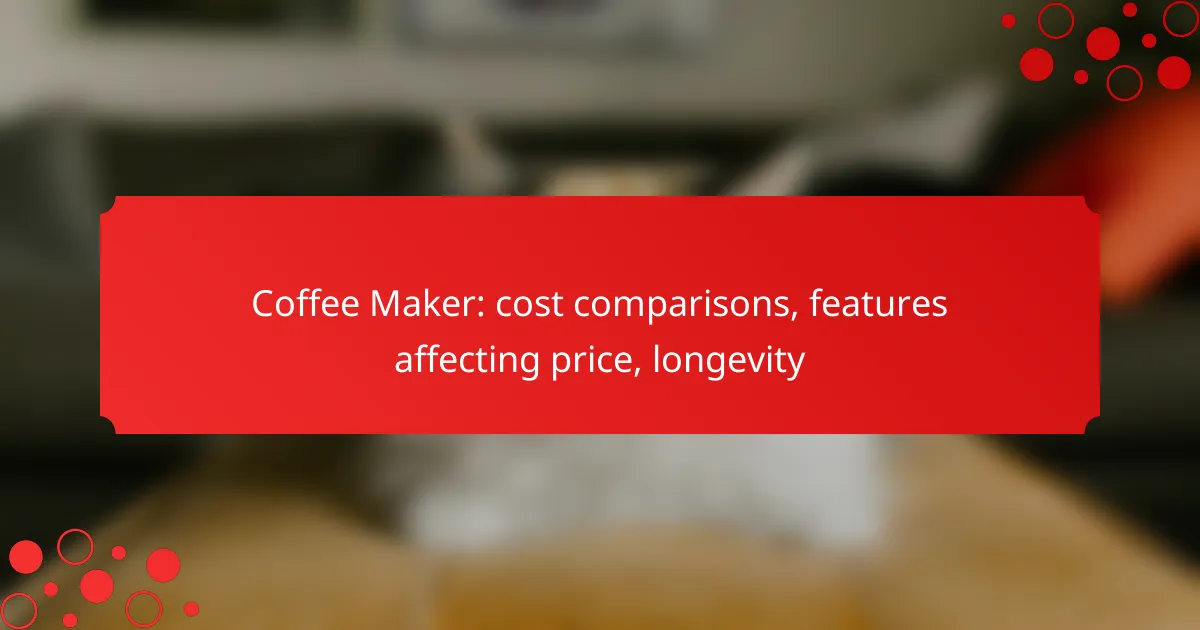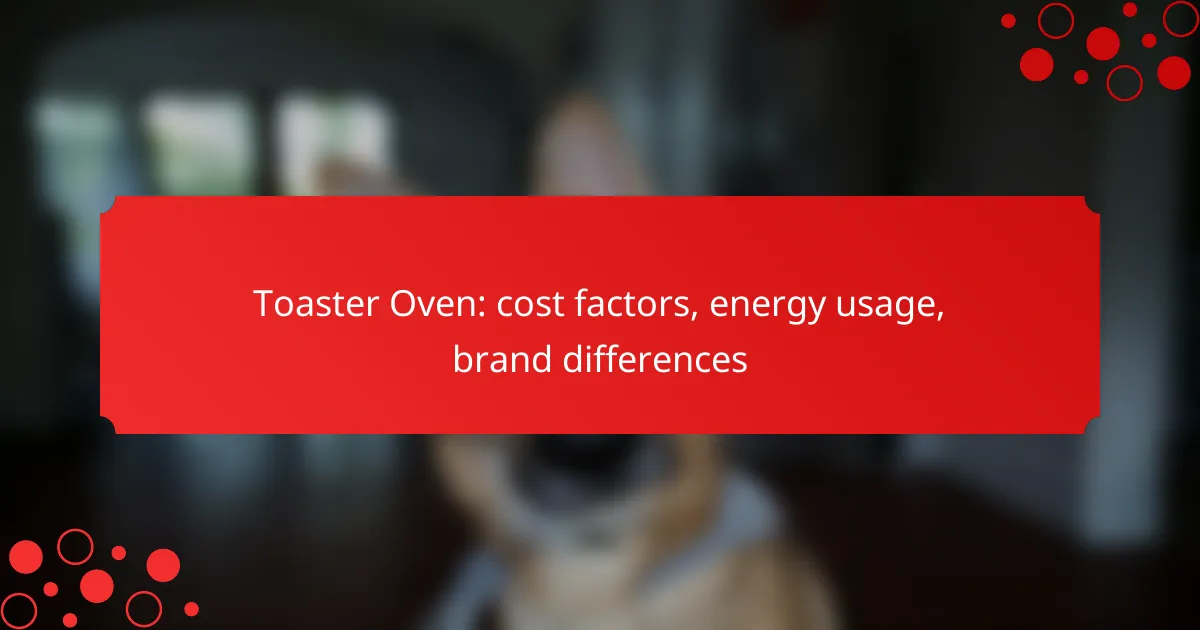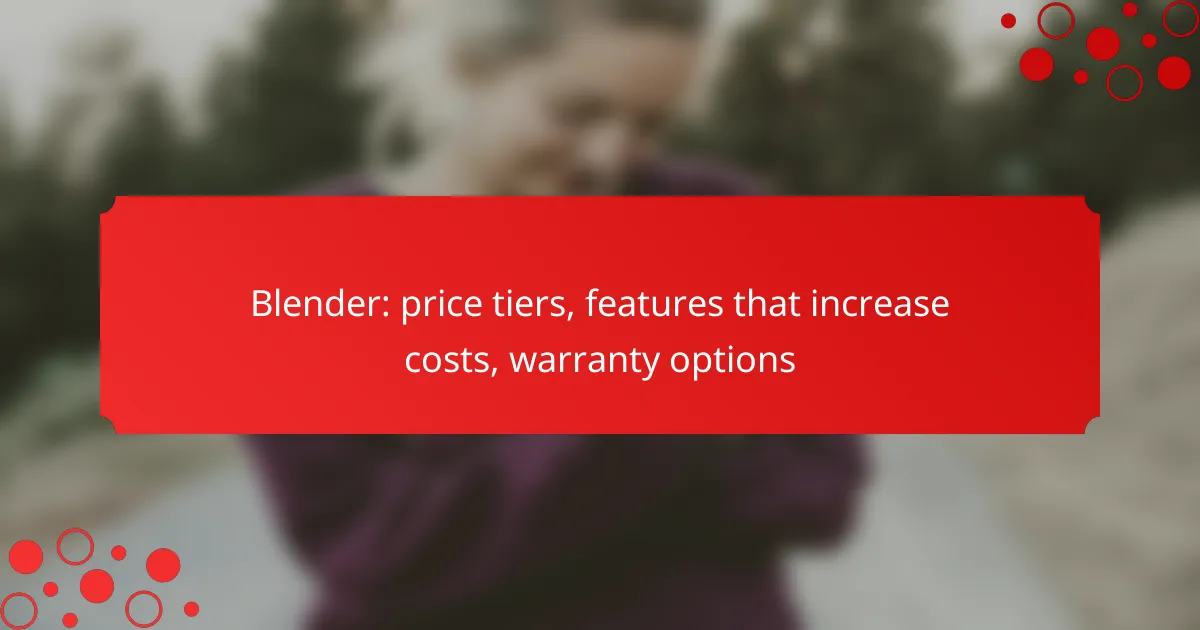Slow cookers are a popular kitchen appliance in the US, with prices ranging from $20 to $200 based on features and brand. Key factors influencing their cost include size, material, and technology integration, which can help consumers choose the right model for their needs. Additionally, slow cookers are known for their energy efficiency, using only 70-150 watts, making them a cost-effective choice for extended cooking times.
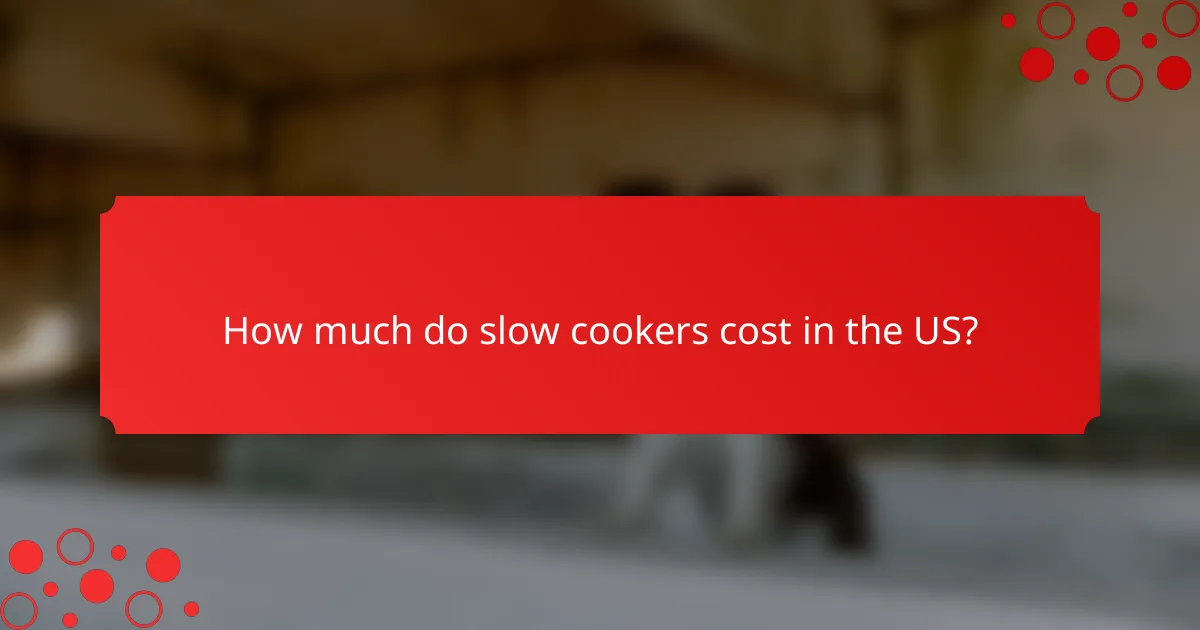
How much do slow cookers cost in the US?
Slow cookers in the US typically range from around $20 to $200, depending on features and brand. Basic models are more affordable, while advanced options with additional functionalities can be significantly pricier.
Average price range
The average price of a slow cooker generally falls between $30 and $100. Budget models may be available for as low as $20, while high-end versions with smart technology can exceed $150. Mid-range options often provide a good balance of features and durability.
Factors influencing cost
Energy efficiency can also play a role in pricing. Models that are designed to consume less electricity may have a higher upfront cost but can save money over time through lower energy bills.
Brand comparisons
When evaluating brands, consider warranty and customer service as well. Some brands offer extended warranties or better support, which can justify a higher price tag.

What features affect slow cooker pricing?
The pricing of slow cookers is influenced by several key features, including size, material, and technology integration. Understanding these factors can help you make an informed decision when selecting a slow cooker that fits your budget and cooking needs.
Size and capacity
Size and capacity are significant determinants of slow cooker pricing. Smaller models, typically ranging from 1.5 to 3.5 quarts, are usually more affordable, while larger models, which can hold 6 quarts or more, tend to be pricier. Consider your cooking habits; if you often prepare meals for a family or group, investing in a larger capacity model may be worthwhile.
Additionally, the size can affect the versatility of the cooker. A larger slow cooker can accommodate bigger cuts of meat or multiple dishes, making it a better option for meal prepping or entertaining.
Material and build quality
The material and build quality of a slow cooker can greatly influence its price. Models made from durable materials, such as stainless steel or high-quality ceramic, often come at a higher cost but provide better heat retention and longevity. Cheaper plastic models may be lighter and more affordable but can lack durability and heat efficiency.
When assessing build quality, look for features like a sturdy lid, a well-sealed pot, and a reliable heating element. Investing in a well-constructed slow cooker can lead to better cooking results and a longer lifespan.
Smart technology integration
Smart technology integration can significantly raise the price of a slow cooker. Models equipped with Wi-Fi or Bluetooth capabilities allow for remote control and monitoring via smartphone apps, adding convenience for busy cooks. These features can range from simple timers to advanced cooking programs that adjust settings automatically.
While smart slow cookers offer enhanced functionality, they may not be necessary for everyone. If you prefer straightforward cooking without the need for tech features, a traditional model may better suit your budget and cooking style.
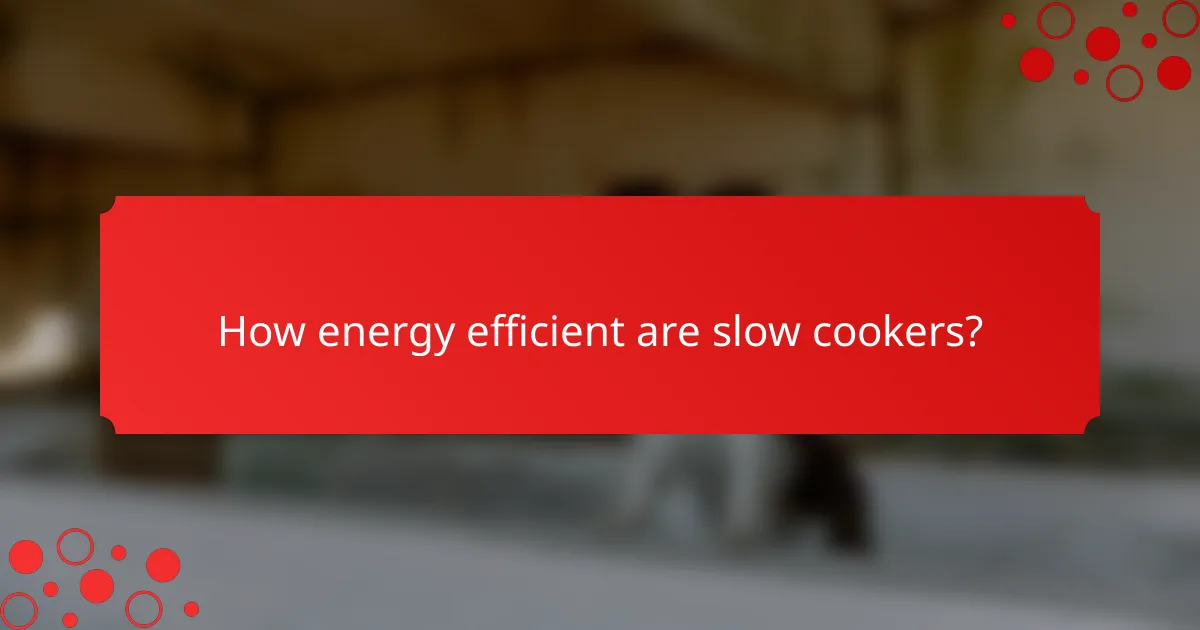
How energy efficient are slow cookers?
Slow cookers are generally considered energy efficient, using significantly less electricity than traditional ovens. They typically consume around 70-150 watts, making them a cost-effective option for long cooking times.
Energy consumption rates
The energy consumption of slow cookers varies based on the model and settings used. Most slow cookers operate at low wattage, averaging between 70 to 150 watts. In comparison, conventional ovens can use 2,000 watts or more, resulting in a substantial difference in energy usage.
For example, if a slow cooker runs for eight hours at 100 watts, it would use about 0.8 kilowatt-hours (kWh), while an oven running for the same duration might consume around 16 kWh. This makes slow cookers a more energy-efficient choice for meal preparation.
Cost savings compared to ovens
Using a slow cooker can lead to significant cost savings on your energy bill. Given their lower energy consumption, slow cookers can save users several dollars per month compared to using an oven for similar cooking tasks. For instance, if electricity costs about $0.13 per kWh, using a slow cooker could cost roughly $0.10 for an eight-hour meal, while an oven might cost around $2.08 for the same duration.
Over time, these savings can add up, especially for households that frequently prepare meals using slow cooking methods. Additionally, slow cookers often allow for more economical cuts of meat and bulk cooking, further enhancing overall savings.
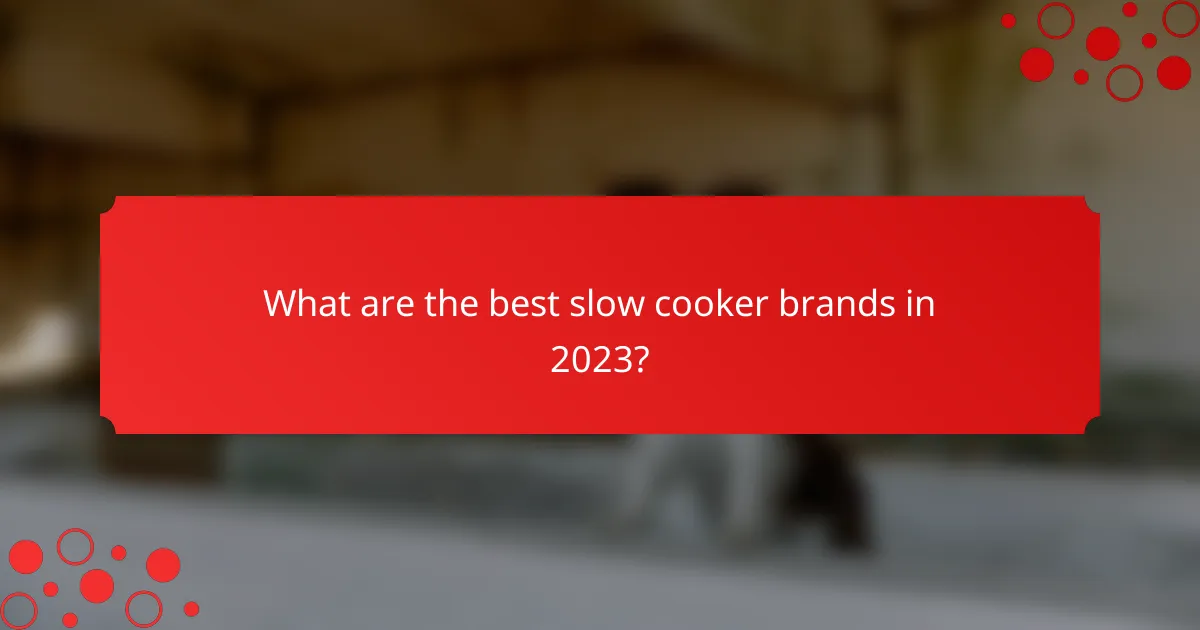
What are the best slow cooker brands in 2023?
In 2023, some of the top slow cooker brands include Crock-Pot, Instant Pot, and Hamilton Beach. These brands are known for their reliability, innovative features, and user-friendly designs, catering to a range of cooking needs and budgets.
Crock-Pot features
Crock-Pot slow cookers are renowned for their simplicity and effectiveness. They typically offer programmable settings, allowing users to set cooking times and temperatures easily. Many models also come with features like removable stoneware inserts for easy cleaning and a variety of size options, from small to large, accommodating different meal sizes.
When choosing a Crock-Pot, consider features like a timer, automatic shut-off, and multiple heat settings. These can enhance convenience and safety, especially for busy households. For example, a model with a locking lid can prevent spills during transport.
Instant Pot advantages
Instant Pot combines slow cooking with multiple cooking methods, such as pressure cooking, sautéing, and steaming. This versatility allows users to prepare a wide range of dishes, from soups to desserts, all in one appliance. The ability to switch between cooking modes can save time and energy.
Key advantages of Instant Pot include its quick cooking capabilities and energy efficiency. Pressure cooking can reduce cooking times significantly, often by half or more compared to traditional methods. However, users should be aware that the learning curve may be steeper due to its various functions and settings.
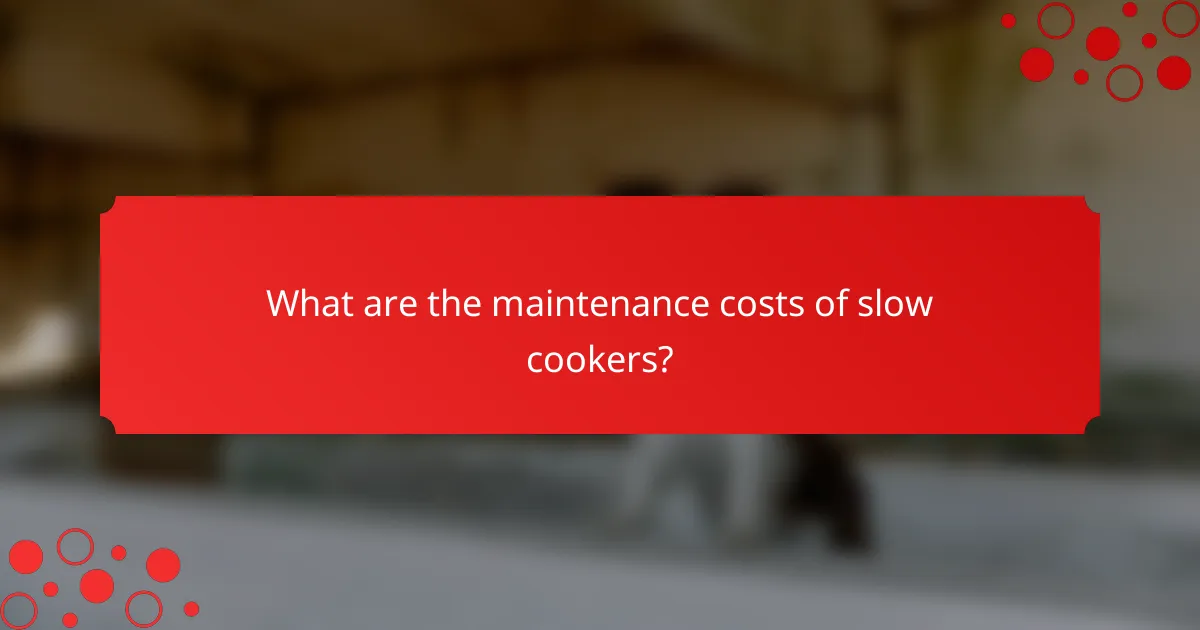
What are the maintenance costs of slow cookers?
The maintenance costs of slow cookers typically include repair expenses and replacement parts, which can vary based on the model and usage. Regular upkeep is minimal, but understanding potential repair needs can help manage overall costs effectively.
Repair frequency
Slow cookers generally require infrequent repairs, often only needing attention if they experience electrical issues or physical damage. Many users find that with proper care, their slow cookers can last several years without significant repairs.
Common problems include malfunctioning heating elements or broken lids, which may necessitate repairs every few years, depending on usage frequency. Regular cleaning and avoiding overheating can help extend the lifespan and reduce repair needs.
Replacement parts pricing
The cost of replacement parts for slow cookers can vary widely, typically ranging from a few dollars for minor components like rubber gaskets to upwards of $50 for major parts like heating elements. It’s advisable to check the manufacturer’s website for specific part prices and compatibility.
Many brands offer affordable replacement options, making it feasible to maintain your slow cooker without significant expense. Consider purchasing from authorized retailers to ensure quality and compatibility with your specific model.
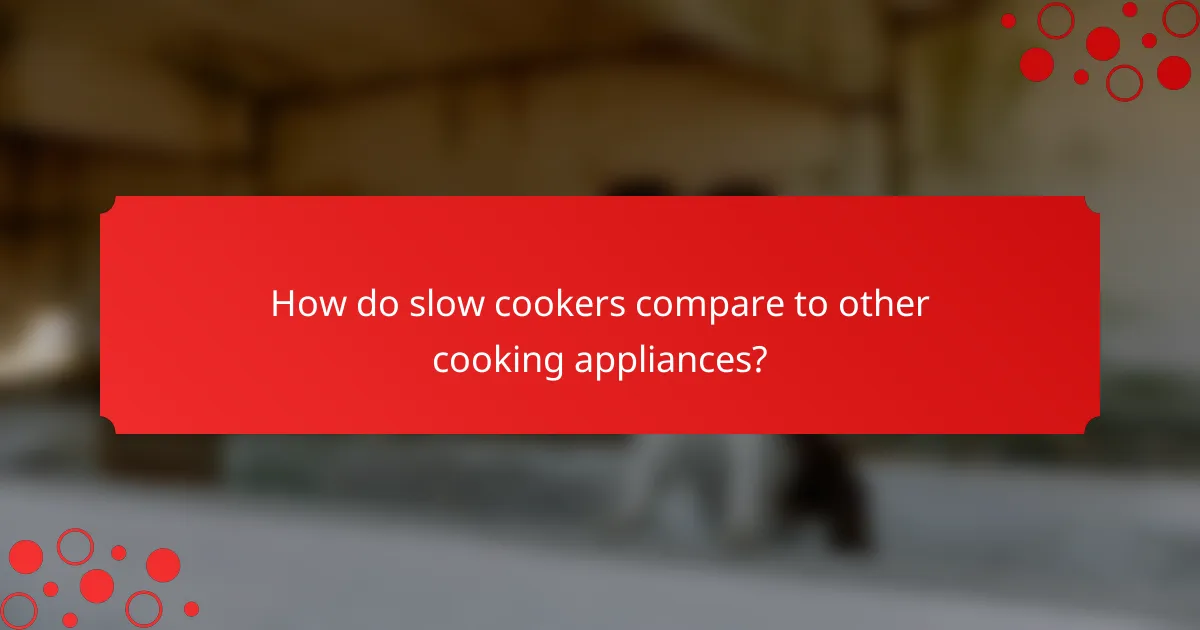
How do slow cookers compare to other cooking appliances?
Slow cookers provide a unique cooking method that emphasizes low, steady heat over an extended period, distinguishing them from other appliances like pressure cookers and traditional ovens. Their cost-effectiveness and energy efficiency make them a popular choice for many households.
Slow cooker vs. pressure cooker
Slow cookers and pressure cookers serve different purposes in the kitchen. A slow cooker is designed for long cooking times at low temperatures, while a pressure cooker cooks food quickly under high pressure, significantly reducing cooking time.
For example, a slow cooker might take 6-8 hours to prepare a stew, whereas a pressure cooker can achieve similar results in about 30-60 minutes. This difference in cooking time often influences the choice based on meal planning and time availability.
When considering energy use, slow cookers typically consume less electricity over their extended cooking period compared to the higher wattage of pressure cookers during their short cooking times.
Slow cooker vs. traditional oven
Slow cookers and traditional ovens differ primarily in their cooking methods and energy consumption. A traditional oven requires preheating and often uses more energy, especially for longer cooking times, while slow cookers operate efficiently at lower temperatures over several hours.
For instance, baking a casserole in a traditional oven might take 45 minutes to an hour, consuming more energy than a slow cooker, which could take 4-6 hours for the same dish. This efficiency can lead to cost savings on electricity bills.
Additionally, slow cookers are generally more user-friendly for busy lifestyles, allowing for meal preparation in advance without constant monitoring, unlike traditional ovens that require more attention during cooking.
